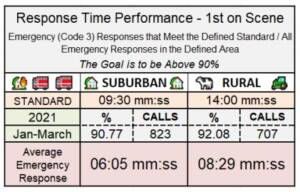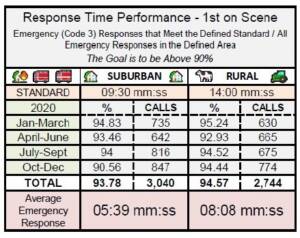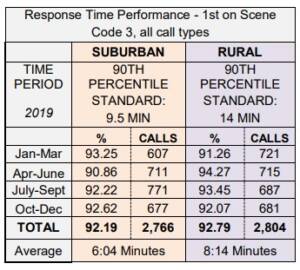GET INFORMED
LEARNING ABOUT LEVEL ZERO
WHAT IS LEVEL ZERO?
Your child is in cardiac arrest; lifeless, not breathing except to occasionally gasp for air in a last ditch effort to stay alive.
A family member starts pediatric CPR on your precious little one while you call 9-1-1. The fire department arrives and takes over care. You know that your baby’s best chance for survival is to get to the hospital, but you overhear Dispatch say that Life Line Ambulance is "Level Zero."
There is no ambulance assigned to your call.
AMR / Life Line Ambulance, the sole ambulance service with permission from the State to transport, went Level Zero at least 760 times between July 2 and December 31, 2021 as documented by Dispatch. It could be you or a loved one that next hears, "Life Line is Level Zero: No Ambulances Available."
July 1, 2021 through September 12, 2022 CAFMA has had to transport 223 patients in our Rescue vehicles due to AMR / Life Line Ambulance Level Zeros, or extended ETAs.
That number doesn’t include transports by other fire agencies, nor does it include times when patients waited unacceptable amounts of time for transport, or when patients had to take a private vehicle, taxi, or rideshare.
Thank you to all that supported HB2609 ambulance services; service areas, the first substantive changes to those statutes in decades. Review the Fact Sheet below!
REPORTS & DOCS
Click the buttons below to view documentation supporting CAFMA's efforts to resolve extended ambulance response time issues, including Dispatch reports, emails between Yavapai Regional Medical Center and Life Line Ambulance Management, and more.
DISPATCH AUDIO
Listen to actual Prescott Regional Communications Center (PRCC) 9-1-1 Dispatch recordings from various calls, including the call where CAFMA had to transport an 8-month-old in cardiac arrest. This is just a sampling; AMR goes Level Zero daily.
Audio from 8 Month Old Cardiac Arrest Call
Audio from Gunshot Wound Call
June 30, 2021 - Level Zero Calls with AMR Dispatch
Sept. 11, 2021 - Level Zero Calls with AMR Dispatch
January 29, 2022 - AMR Level Zero, Engine 58 Transported
March 2, 2022 - AMR Level Zero, Prescott
April 26, 2022 Level Zero 7:05 PM-8:17 PM
May 31, 2022 Level Zero 10:53 AM-11:53 AM
MEDIA COVERAGE
Scroll through to watch investigative reports, news clips, and CAFMA Connect podcasts relating to extended ambulance response times.
FAQs
- +Glossary
- American Medical Response (AMR) – The parent company of Life Line Ambulance. Life Line Ambulance. For decades, AMR was the sole ambulance transport service allowed to operate in the Quad Cities. CAFMA recruited a second ambulance provider, Priority Ambulance, and after over two years of going through the Certificate of Necessity process with the Bureau of EMS, Priority has been recently granted a license for the region as well and are currently ramping up operations.
Certificate of Necessity (CON) – Permission from the State of Arizona to operate an ambulance service within set boundaries and at State-set rates.
HB2609 Ambulance Reform – PASSED June 23, 2022! Representative Judy Burges has sponsored HB2609, set to reform the current antiquated CON process so that what has happened in other areas of the state, and what is happening in the Prescott area, will not happen to anyone else. Click to learn more.
Level Zero – Dispatch code for when there are no ambulances available.
Quad Cities – Prescott, Prescott Valley, Chino Valley, and Dewey-Humboldt, Arizona.
Rescue – A Fire District vehicle that is able to run a number of low acuity calls; one example being public assist calls. The Rescues are also used for transporting patients when certificated ambulances are not available, or have extended ETAs.
- +Will my taxes increase if CAFMA receives permission from the State to operate ambulances?
- No. There is no plan that includes raising the tax rate due to CAFMA receiving a Certificate of Necessity (CON).
CAFMA has prepared for and is expecting to operate in the red for 18 – 24 months due to certain capital expenses, like purchasing ambulances, and then break even. CAFMA does not have a plan to increase the tax rate due to receiving a CON.
It is worth noting that CAFMA taxpayers subsidize AMR, a for-profit company, every time AMR cannot provide an ambulance, and every time AMR dispatches an ambulance staffed with EMTs (certified Basic Life Support) to an emergency call requiring paramedics (those certified Advanced Life Support). When that happens, CAFMA’s paramedics must provide care and ride-in with the AMR crew; this also keeps the entire engine unavailable for calls until patient care is transferred.
- +Are there agencies besides CAFMA concerned about Level Zero?
- Yes, there are:
WICKENBURG: At the January 5th, 2022 Yavapai County Board of Supervisors meeting, the Wickenburg Fire Chief shared his community’s frustration with AMR’s ongoing inability to staff enough ambulances for emergencies. Begin at 8:55.
WILLIAMS: The City of Williams’ Police and Fire Chiefs have spoken out about frequent extended AMR ambulance response times, sharing horrific examples of seriously injured patients waiting 60-80 minutes for an ambulance. These included a juvenile that had been thrown from a horse and a domestic violence victim with a severe head injury.
The Quad Cities, Wickenburg, and Williams are all within the boundaries of CON 62, where AMR is the only ambulance service allowed by the State Bureau of EMS to transport.
When, as often happens, AMR can’t staff enough ambulances for the Quad City area, AMR management pulls ambulances from Wickenburg or Williams, leaving those areas dangerously lacking. In an attempt to cover those areas, AMR may then pull units from the Valley, negatively affecting response times in those areas as well.
PHOENIX: A recent ABC15 investigative piece reported that Phoenix Fire Department “recently raised concerns to the state health department about the trickle-down impact from the Prescott area.”
- +Why did CAFMA join with others in the Fire Service to reform state ambulance statutes (HB2609)?
- The ambulance issues we face in our area are not unique to us. In fact, those areas of the state that are serviced solely by AMR are experiencing the same response challenges as the Quad Cities. Changing a state statute heavily guarded by AMR and their lobbyists requires that the Arizona Fire Service work together.
ON JUNE 23, 2022, HB2609 PASSED! This bill, sponsored by Representative Judy Burges, makes patient care the priority, improves transparency in response time reporting, and streamlines the ambulance Certificate of Necessity application process, thereby allowing communities in desperate need of safe, reliable ambulance response to receive the help they require much faster.
Thank you to Representative Judy Burges, the Arizona Fire Service, and every single person that helped this bill! It will go into effect in January of 2024.
We are grateful to all that reached out to legislators to request their support of HB2609 – ambulance reform! Additionally, we thank those that reached out to local elected officials to ask that they publicly support the effort and engage in the process through their associations, as well as contacting state officials.
On February 14, 2022, HB2609 passed out of Committee. On March 2, 2022 HB2609 was voted through the State House of Representatives! On May 18, 2022 the bill was passed by the Senate. The bill passed on June 23, 2022! It will not go to the Governor for his signature. The bill will go into effect on January 1, 2024. #AZAmbulanceReform
- +What happens when someone calls 9-1-1?
- When someone calls 9-1-1 in an emergency, the Prescott Regional Communications Center (PRCC – Dispatch) will dispatch the closest available ambulance crew, fire engine crew, and/or law enforcement officer.
CAFMA partners with neighboring fire agencies. We back each other up.
As AMR is the only ambulance transport company with permission from the State to transport, AMR must back-up itself. They do have a back-up agreement with Mayer Fire District, however Mayer is also a good distance away, and cannot always provide back-up. We assume that is why AMR has asked CAFMA on three separate occasions to provide assistance to them using our Rescues.
This means that when AMR goes Level Zero: No Ambulances Available, there is no back-up elsewhere in the area. AMR must pull units from Wickenburg, Williams, Glendale, and Phoenix, leaving those regions more short-staffed than they already are. All of these cities are over an hour away.
CAFMA does not consider Wickenburg and Williams to be part of the Quad Cities system, and therefore does not agree that an ambulance coming from Wickenburg is an “available” ambulance.
- +Are ambulances unable to respond to emergencies because they are tied up with non-emergency calls due to public misuse of 9-1-1?
- We do not see as much abuse of the 911 system in our area as one would see in larger cities. Most of our citizens use the system as it is intended. Do we have the occasional misuse? Yes, but that is not the norm and is not overburdening the system.
The ambulance shortage is a direct result of a decreased number of units staffed and in the system, as well as a significant increase in call volume. For example, six years ago there were typically 11 staffed units in the system, and even then, AMR / Life Line experienced response time issues. Today, the number of staffed units is typically between three and five.
Over that same period of time, CAFMA’s call volume has increased over 40%. CAFMA has added resources to address the volume, whereas AMR / Life Line has decreased resources.
The most recent census shows approximately 156,000 residents in the Prescott/CAFMA jurisdiction. That number does not include the daytime or tourism population.
- +Are there currently AMR / Life Line ambulances stationed in each of the Quad Cities?
- Technically, yes; however, it is not unusual for their stations to go unstaffed for a day or days. Given the shortage of staffed ambulances, their units are generally on the run all day, every day.
- +How does the State regulate ambulance transport response times?
- As a private for-profit company, AMR is not required to release data to the public. The Department of Health Services (ADHS) requires that AMR self-report annually, but the company is not required to provide raw data, and none of their data is public. Unlike public entities, private ambulance service data is not public and is therefore beyond public scrutiny.
There are not audits of the information submitted, even when discrepancies exist, e.g. when CAFMA provided three years’ worth of data regarding ambulance response times to the state. The comment from a state official when comparing the two in a presentation stated, “There is a significant difference in what AMR has reported as their response times versus what CAFMA has presented… Next slide, please.”
A 1999 Auditor General’s Report described the CON process as antiquated, a blockade to competition, inconsiderate of patient care, having a renewal process that lacked review, and lacking in consideration for the growth of areas as it relates to response time requirements. The report also pointed out that the ADHS Bureau of EMS was not properly dealing with, or responding to, complaints.
View the 1999 Auditor General’s Report within ‘A Brief History of CAFMA’s Efforts to Resolve Ambulance Transport Issues.’
CAFMA has radio traffic and screen shots that show AMR units placed on the scene of a call well in advance of the unit actually arriving. Prescott Regional Communication Center (PRCC – Dispatch) had a meeting with AMR management regarding the issue some time ago, at which time AMR denied any units had been listed on scene prior to arrival.
We now have radio traffic from Monday, October 25, 2021 as well as a screen shot from October 27, 2021 clearly showing AMR units marked on scene that had not yet arrived. In our opinion, this, along with other concerns we’ve raised, begs the question – are the response times that AMR submits accurate? Our records and their records regarding their response times in the Quad Cities are significantly different. The Bureau of EMS has acknowledged the discrepancies but have failed to act.
As a public entity, CAFMA is required per A.R.S. § 39-121 et. seq. to make our public agency records available for public inspection. CAFMA takes transparency one step further and posts many items monthly on our website, including response times, call volume, and financials.
- +What are CAFMAs response time standards and does the Agency reach them?
- CAFMA staffs 10 full-time stations covering 369 square miles, including Prescott Valley, Chino Valley, Dewey-Humboldt and unincorporated areas, such as Paulden and Williamson Valley Road, in the central region of Yavapai County. Every engine crew consists of at least one paramedic, if not more.
From 2021 Statistical Summary: 1st Quarter:

From 2020 Alarm Summary Brochure:

From 2019 Alarm Summary Brochure:

- +Will CAFMA charge for ambulance transport?
- Were CAFMA to receive a CON, we would be required by the State to charge for services provided at rate approved by them. It is projected that monies generated by transports would at minimum cover the costs of our services. Our proposed base trip rate is below that of the current provider, and our proposed equipment rate is set at cost of materials, i.e. You pay what we pay, no more. This is in contrast to the approximately 230% upcharge AMR bills for supplies.
- +If CAFMA receives a CON, will the Agency require that ambulance personnel become firefighters?
- No. Ambulance personnel will be allowed to test into firefighter positions if they would like, but will not be required to become firefighters. Personnel on the ambulances will be civilian EMTs and paramedics, which means that they will be in the Arizona State Retirement System (ASRS), as opposed to the Public Safety Personnel Retirement System (PSPRS).
- +Is CAFMA allowed to transport a critical patient in a fire engine?
- Technically, yes; however, we now employ Rescues (Fire District vehicles) as they are a much safer and efficient way to transport. Per our medical control physician, we can transport any patient when the ETA from AMR is 30 minutes or greater.
While the statute says CAFMA can transport under certain limited conditions, we are always under the threat of legal action by the State. For example, you can view one of the “Notices of Investigation” that CAFMA has received from the State for complaints that we transported an 8-month-old in cardiac arrest, a patient with a gunshot wound, active stroke patients, etc. when it was “not medically necessary.”In addition, because we cannot charge for services without a CON, we do not have a funding mechanism to hire personnel to staff the Rescues in the manner in which they should be staffed in order to supplement the failing 9-1-1 system.
- +Is it possible for CAFMA to have ambulances that work in conjunction with AMR / Life Line ambulances?
- Yes, and that is the goal should we be successful in the CON process.
Were we to receive a CON, our units would only be used to help supplement the 9-1-1 system.
- +Has CAFMA considered entering into an agreement with AMR / Life Line Ambulance?
- Historically, AMR has not abided by their written agreements regarding response times. Rather than provide the promised resources, they typically choose to pay the associated fines. This defeats the intent of the contract, which is to provide lifesaving emergency services to our community.
AMR walked away from over $1 million in fines assessed for failure to perform in the City of Scottsdale. There was an out of court settlement, and AMR is no longer their transport provider.
AMR has lost nearly all contracts for emergency transport services in the Valley for failure to perform. I believe they may have one or two agreements with a couple smaller entities.
The first time AMR offered CAFMA a written agreement was just as Priority Ambulance was getting ready to submit their CON application for the region. Any agreement signed by CAFMA at that time would have been used by AMR as an exhibit in an attempt to prohibit private competition for services. That is contrary to the direction our Staff received from community leaders and elected officials, and so we did not sign that agreement. The agreement also included stipulations that are not in the best interest of our community or our Agency.
In short, if one looks at the company’s history across Arizona, as well as other states in the country where agreements have been signed, AMR has failed to perform per their contracts. Why would we believe a contract with CAFMA would be any different? Case in point, Prescott ratified their agreement with AMR and has still had to transport patients in private vehicles, or deal with hour-long wait times.
Ultimately, signing a contract would not have improved services, nor would it have saved taxpayer money.
- +What's the difference between an EMT and a paramedic, and why do certain calls require one or more paramedics?
- EMTs hold a certification in Basic Life Support (BLS), whereas paramedics have a higher level of certification (Advanced Life Support – ALS), training, and experience.
The distinction is important because more and more, AMR has been dispatching an EMT-staffed ambulance to patients requiring paramedic-level care. When that happens, and because paramedics often cannot transfer patient care to a lower level of medical certification, CAFMA paramedics must provide medical care in the back of the ambulance with the AMR crew, keeping the entire engine unavailable until patient care is transferred at the hospital.
When our crews are taken out of service, they aren’t able to respond to emergency calls, even if they are the closest fire/medical response. Listen to this Level Zero Dispatch radio traffic, Prescott E75 specifically, for an example of why waiting for an ambulance, or being taken out of service due to the choices being made by AMR, matters: https://youtu.be/nqlh39CVRT4
Due to AMR’s inability to staff enough ALS (paramedic-staffed) ambulances, CAFMA paramedics had to provide medical care in the back of AMR ambulances en route to the hospital 1,455 times July 1, 2021 – August 9, 2022.
Examples –
Unresponsive 10-year-old: https://bit.ly/3S2XwiI
Gunshot wound: https://bit.ly/3BhnEj0
Engine 63: https://bit.ly/3qyuImHWe have seen it said that most emergency calls are not for critical patients; rather for non-critical patients, and calls with non-critical patients do not often require paramedic-level care or even emergency medical response.
Regarding patients, the labels “critical” versus “non-critical” can be misleading.For example, a heart attack is life or death and is absolutely a critical patient. A fractured leg is considered non-critical in that it is likely not life or death, but the patient still may require advanced care and transport for treatment.
For example, a patient with a fractured bone will typically require an IV and narcotic pain medications. A paramedic is needed to start the IV and administer narcotics. Once the IV is started and narcotic pain medications have been provided, the paramedic is not allowed to turn over patient care to someone with a lower level of certification.
To that end, a ”non-critical patient” may still require advanced care, but not advanced life support.
Patient condition dictates if a paramedic is required, and how many are required to provide an appropriate level of care. In the example of a fractured bone, one paramedic is required to provide patient care.
When an AMR ambulance arrives with only a BLS level crew (EMTs), CAFMA has no choice but to send our medic in with the ambulance, thereby taking our engine out of service.
If the call is for a critical patient requiring advanced life support, it may take at least two paramedics and an EMT to provide the appropriate level of care.
There is a difference between ALS and BLS ambulances, as well as a difference between advanced care and advanced life support.
To be clear, we do not have a significant 9-1-1 abuse problem in our area. That may be a good sound bite to use when trying to deflect attention away from a corporate failure by AMR to provide enough resources, but it is not reality.
Bottom line, whether your medical emergency requires Basic Life Support, an advanced level of care, or Advanced Life Support, please don’t hesitate to call 9-1-1. CAFMA and local Life Line ambulance crews will treat you with the respect and dignity you deserve, and CAFMA will continue to advocate for increased ambulance resources. - +Is ‘Level Zero’ a scare tactic so that CAFMA can take over ambulance transport?
- No. First and foremost, we are working to supplement the failing 9-1-1 system, not take it over. We are not looking to run any interfacility transports; rather, we are only looking to run 9-1-1 calls. Interfacility is typically where the ambulance revenue is the most lucrative.
CAFMA’s proposed base trip charge is less than AMR. Additionally, CAFMA is proposing to charge only what we pay for supplies, as opposed to AMR’s 230% mark-up on supplies.
Scare tactic? We believe the documentation, data, and the radio traffic we’ve provided on this website clearly demonstrates that our efforts are not a scare tactic, rather an effort to inform the public regarding challenges with ambulance transport.
Is the situation scary, absolutely? We are hoping that by informing the public, you will act and call for change, including legislative change that will hold providers accountable for their response times and services. The system in our area today is broken and it is a danger to the health and well-being of our community.
That is not a scare tactic, it is simply a fact.
NOW GET INVOLVED.
Now that you have all of the facts, it is time to GET INVOLVED.

